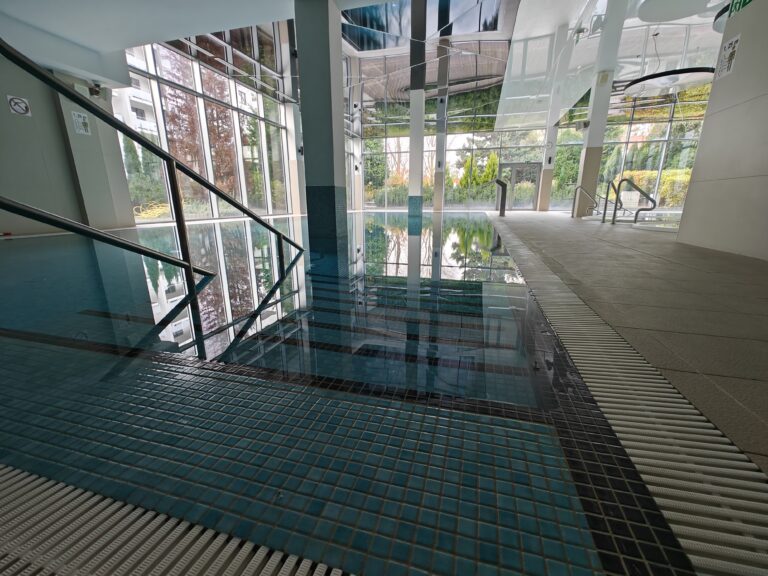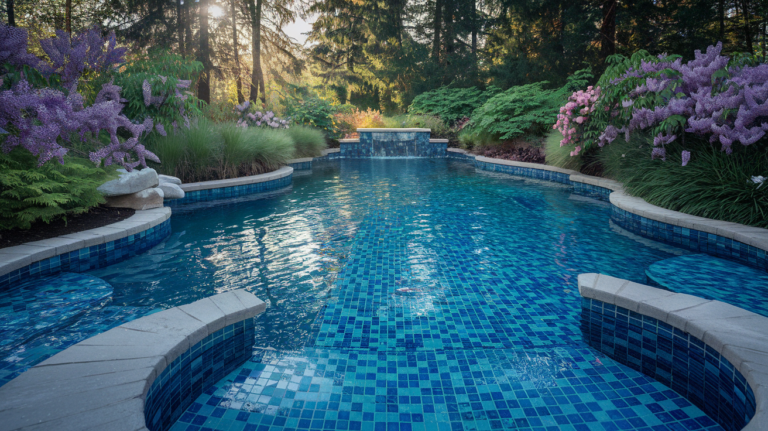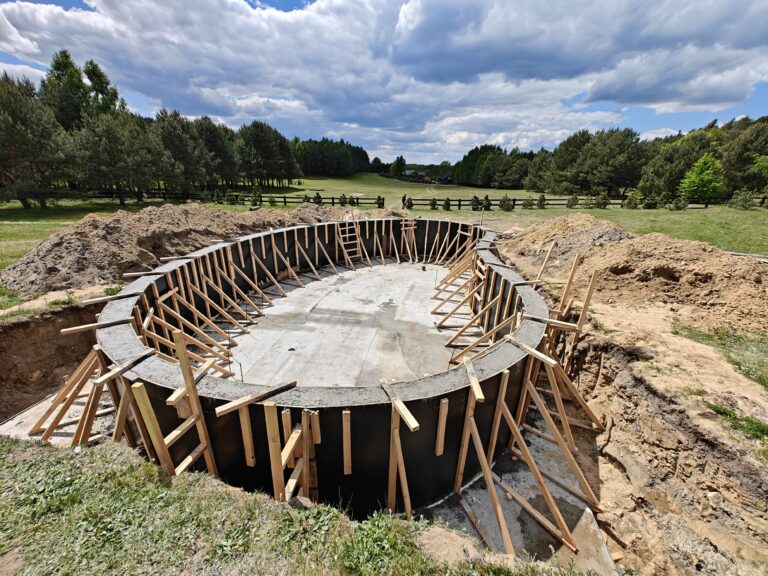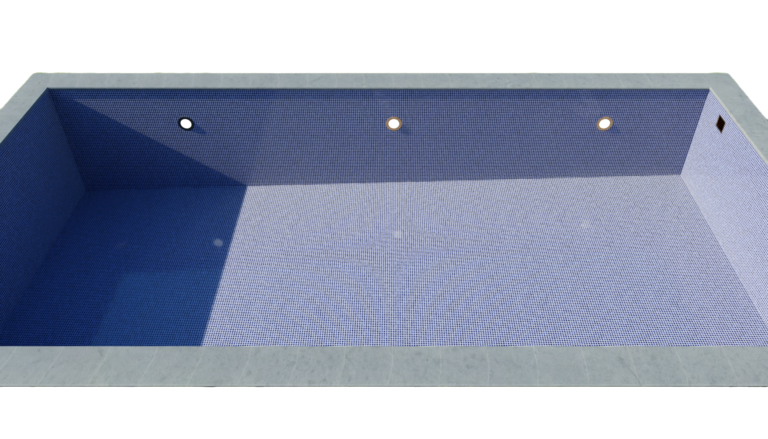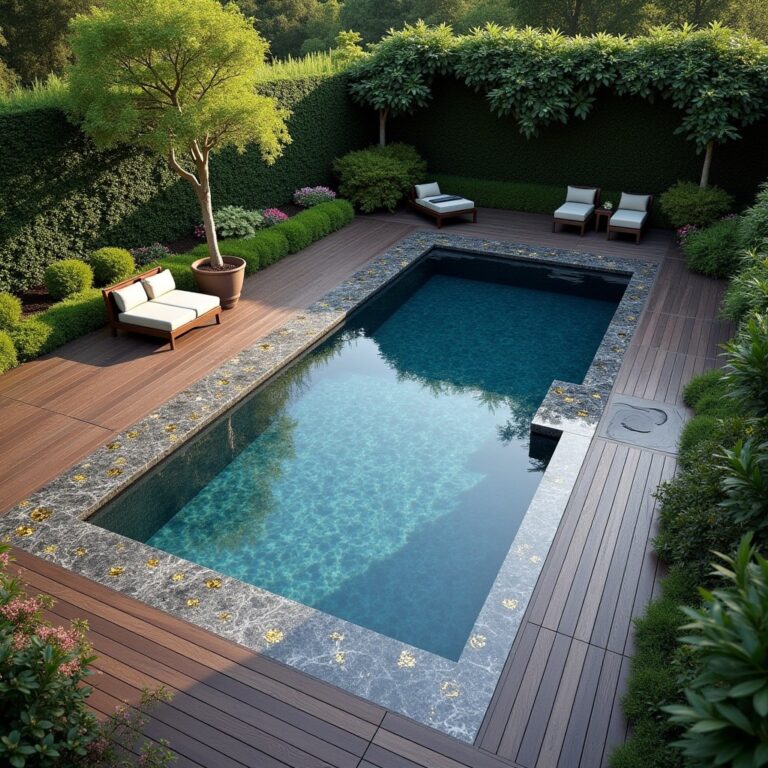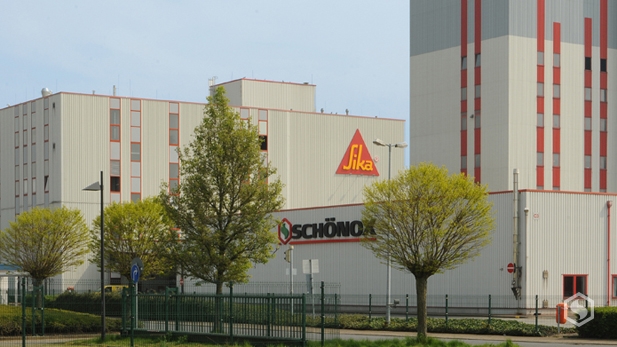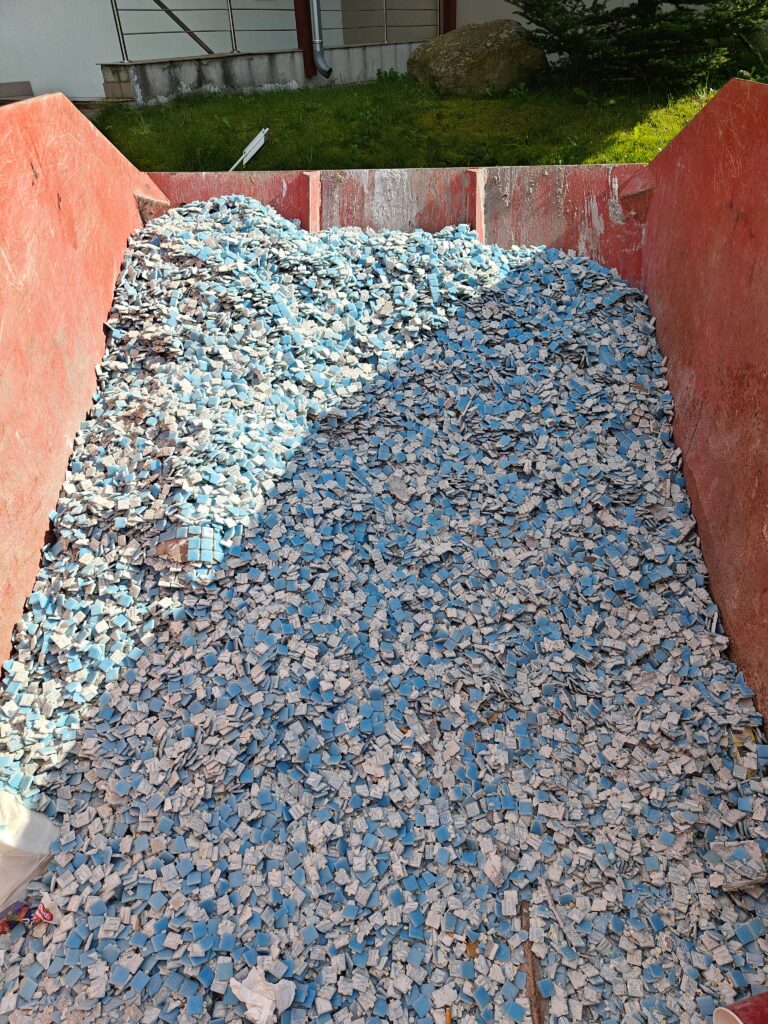Swimming pool with an external overflow (known as an overflow trough) or an internal overflow, commonly known as a skimmer? The differences.
The differences, between these two types of pools, are fundamental. In this article we will help you understand them.
- Water collection method:
- External overflow (overflow gutter): Water overflows over the edge of the pool into the gutter surrounding the pool, and is then drained by gravity to the overflow tank and from there to filtration. Water is collected from the entire surface of the water table.
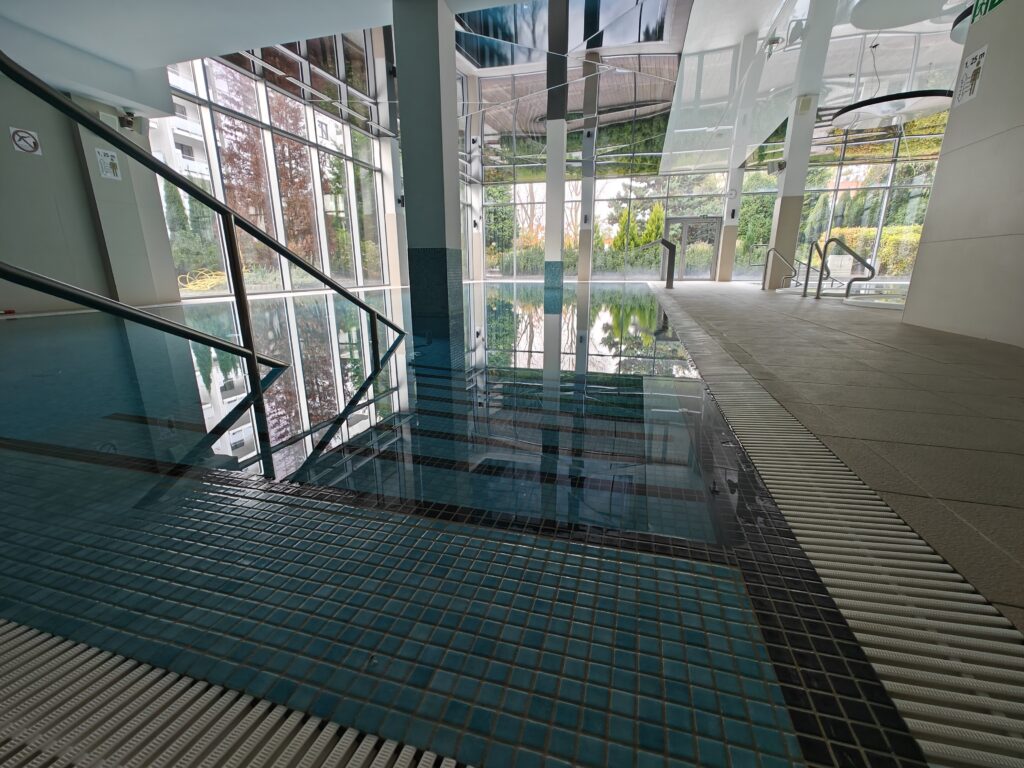
- Internal overflow (skimmer): Water is drawn in through the openings of skimmers located in the walls of the pool, and then directed to filtration. Water is collected point-wise, at the locations of the skimmers.
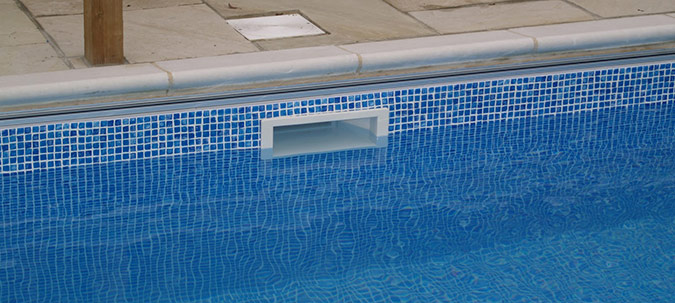
Purification efficiency:
- External overflow: incomparably more efficient water purification system, as it collects impurities from the entire water surface, including those floating on the surface (e.g. leaves, insects). Provides better circulation and water exchange.
- Internal overflow: Less effective at removing surface contaminants because skimmers only collect water from specific points. Requires proper placement of skimmers and a more powerful pump to ensure good circulation.
Construction and costs:
- External overflow: Requires a more complex design, including an overflow gutter, overflow tank and additional installation. It is more expensive to build and operate.
- Internal overflow: a simpler design, it is limited to the installation of skimmers in the walls of the pool. This solution is simple, cheaper to build and operate but much less effective. For private use, however, completely sufficient.
Aesthetics:
- External overflow: gives a stunning water mirror effect, as the water level is level with the edge of the pool. Incomparably more aesthetically pleasing and modern.
- Inner overflow: the water level is lower than the edge of the pool, which is less visually impressive and builds a “wall-to-wall” effect.
Application:
- External overflow: mainly used in public pools, hotel pools and luxury private pools, where high water quality and visual effect are a priority.
- Internal overflow: mainly used in private pools, where the trade-off between cost and functionality is important.
Technical requirements:
- External overflow: Requires precise construction and leveling of the overflow gutter to ensure even water flow.
- Internal overflow: Less demanding in terms of precision manufacturing, but requires appropriate selection of the number and placement of skimmers.
-
Crystal clear yet healthy pool water.
Clean pool water is key: Key parameters for health and safety. Do you dream of a refreshing swim in perfectly clean water? You need to know that the quality of the water in your pool has a direct impact on the health and comfort of all bathers. Negligence in this area can lead to unpleasant…
-
Artificial intelligence in pool design: The future of luxury and innovation.
Artificial intelligence (AI) is transforming the world, entering areas that not long ago seemed reserved exclusively for human creativity and experience. From medicine and transportation to art and architecture, its influence is becoming increasingly apparent. One of the most surprising yet fascinating applications of AI is in pool design. Does this mean a revolution in…
-
We are building a swimming pool for Dojo Old Village.
The Old Village Dojo is a uniquely atmospheric place that pays homage to traditional Japanese architecture and martial arts. Located in a picturesque setting away from the hustle and bustle of the city, it offers ideal conditions for concentration, training and contemplation. It is the only training complex in Europe built on the principles of…




